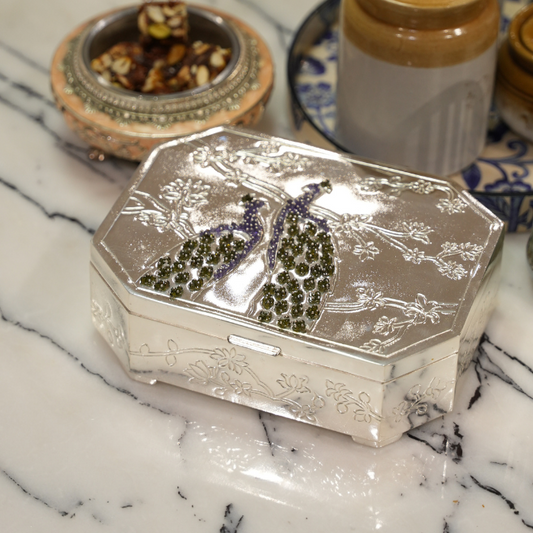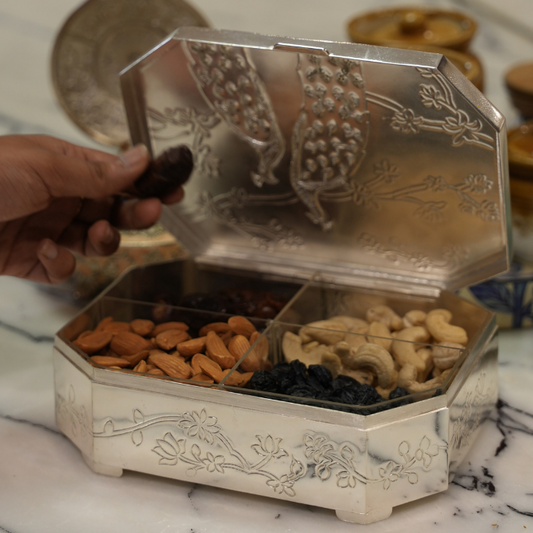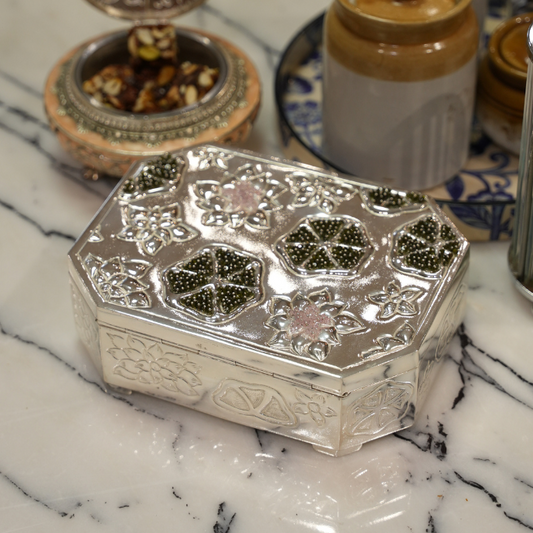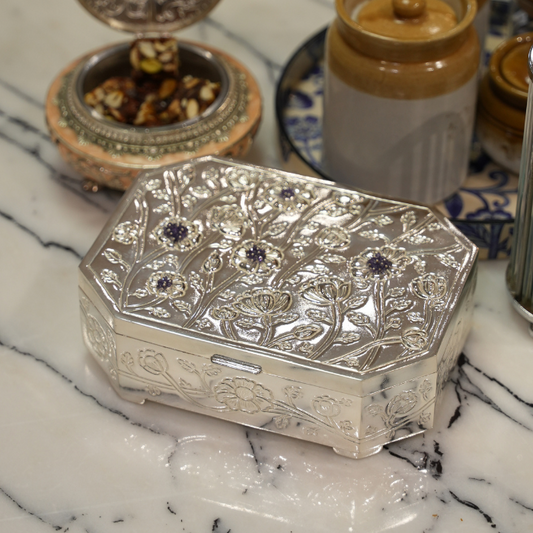Silver has been a cherished precious metal for centuries, valued for its beauty, versatility, and industrial applications. From jewelry to electronics, silver plays a significant role in various industries. However, not all silver is the same. Understanding the types of silver can help buyers make informed decisions when selecting silver products.
In this blog, we’ll explore the different types of silver, their properties, and common uses, along with tips on distinguishing between pure silver, sterling silver, and other varieties.
Sterling Silver: The Most Common Type
Sterling silver is perhaps the most familiar type of silver. It's a silver alloy composed of 92.5% pure silver and 7.5% other metals, typically copper. This combination enhances the metal's strength and durability without compromising its beauty.
Properties and Characteristics:
- Durable and resistant to damage
- Tends to tarnish over time but is easily cleaned
- Ideal for everyday use
Common Uses and Applications:
Sterling silver is the most popular choice for jewelry, cutlery, and decorative items due to its balance of beauty and strength.
Pure Silver (Fine Silver)
Composition and Purity:
Pure silver, also known as fine silver, contains 99.9% pure silver. This level of purity gives it a lustrous shine and softness.
Properties and Characteristics:
- Highly malleable and ductile
- Susceptible to scratching and bending
- Tarnishes less easily than sterling silver
Common Uses and Applications:
Fine silver is typically used in investment-grade bullion, coins, and specialized applications like high-end electronics.
Silver-Plated: A Thin Layer of Silver
Definition and Process of Silver Plating:
Silver-plated items are made by coating a base metal (like copper or nickel) with a thin layer of silver.
Comparison with Solid Silver:
- More affordable but less valuable
- Requires extra care as the silver layer can wear off
Common Uses and Applications:
Silver-plated items are popular in cost-effective decorative pieces and household items.
Coin Silver: A Historical Legacy
Historical Context and Composition:
Coin silver was historically used for minting coins, with a typical composition of 90% silver and 10% other metals.
Uses and Relevance Today:
Although no longer used for coins, coin silver is prized in antique silverware and collectibles.
German Silver (Nickel Silver)
Composition:
German silver, also known as nickel silver. Despite its name, nickel silver does not contain any actual silver. It's an alloy composed of copper, nickel, and zinc.
Properties and Common Uses:
Nickel silver is widely used in costume jewelry, tableware, musical instruments, decorative item and cutlery due to its durability and affordability.
Argentium Silver
Composition and Unique Properties:
Argentium silver is an innovative alloy containing more silver than traditional sterling silver, along with germanium, which enhances its tarnish resistance.
Advantages Over Traditional Sterling Silver:
- Highly tarnish-resistant
- Hypoallergenic
- Requires less maintenance
Common Uses and Applications:
Argentium silver is favored for high-quality jewelry and items requiring minimal upkeep.
Britannia Silver
Composition:
Britannia silver contains 95.8% silver, making it purer than sterling silver.
Historical Significance and Applications:
This type of silver is historically significant and is used in coins and collectible items.
Pure Silver vs Sterling Silver
- Purity: Pure silver is 99.9% silver, while sterling silver is 92.5% silver.
- Durability: Sterling silver is harder and more resistant to damage than pure silver.
- Applications: Pure silver is often used for investments, whereas sterling silver is ideal for jewelry and everyday items.
925 Silver or Sterling Silver
Understanding the 925 Stamp
The “925” hallmark signifies that the item contains 92.5% silver, confirming its authenticity as sterling silver.
Composition and Properties
925 silver is durable, tarnish-resistant, and hypoallergenic, making it ideal for jewelry and household items.
925 Silver Purity
Measurement of Purity
The purity of silver is measured in terms of millesimal fineness, with 925 indicating 92.5% silver.
Testing and Certification
To ensure authenticity, silver items should bear hallmarks or certifications from reputable authorities.
Pure Silver 925
What Does Pure Silver 925 Mean?
Although “pure silver” and “925 silver” are often used interchangeably, they differ. Pure silver is 99.9% silver, while 925 silver is sterling silver with added alloys for strength.
Real-World Applications
- Pure silver: Coins, bullion, and electronic components
- 925 silver: Jewelry, tableware, and decorative items
Common Uses of Silver
Silver has a wide range of applications, including:
Tableware
Silverware (forks, spoons, and knives), tea sets, and trays are popular choices for dining and entertaining.
Coins and Bullion
Silver coins and bullion are valuable assets used as currency and investments.
Decorative Items
Silver vases, candlesticks, picture frames, and other decorative objects add elegance and sophistication to any space.
Care and Maintenance
To preserve the beauty and lustre of your silver items, proper care and maintenance are essential. Here are some tips:
Regular Cleaning
Gently clean your silver items with a soft cloth dampened with a mild silver cleaning solution or a mixture of baking soda and water.
Tarnish Removal
If your silver items have tarnished, you can use a commercial silver polish or a homemade tarnish removal solution.
Storage
Store your silver items in a tarnish-resistant bag or box to prevent tarnish.
Silver, with its versatility and timeless appeal, continues to be a popular choice for jewellery, tableware, and decorative items. By understanding the different types of silver and following proper care guidelines, you can enjoy the beauty and value of this precious metal for years to come.
Conclusion
Different Types of Silver versatility makes it a popular choice for various applications. Whether you're purchasing jewelry, investing in bullion, or seeking decorative items, understanding the types of silver ensures you make the right choice for your needs.
When buying silver, always check for hallmarks and certifications to guarantee authenticity and quality.
F&Q
What is 92.5 sterling silver, and why is it popular for jewellery?
Answer: Sterling silver contains 92.5% pure silver and 7.5% other metals (usually copper). Its durability and affordability make it a favourite for rings, necklaces, and bracelets.
What makes fine silver different from other types?
Answer: Fine silver is 99.9% pure, making it the purest form. It’s often used for coins, bullion, and specialised jewellery.
How does silver plating work, and what items are typically silver-plated?
Answer: Silver-plated items have a thin layer of silver over a base metal (like brass or copper). Common examples include flatware, trays, and decorative pieces.
What’s the historical significance of coin silver?
Answer: Coin silver was historically made from melted coins and used for tableware. It reflects a piece of our monetary history.
Is German silver actually silver?
Answer: No, German silver (nickel silver) contains no real silver. It’s an alloy of copper, nickel, and zinc, often used for decorative items.
What are the different types of silver?
Answer: Silver types include pure silver (fine silver), sterling silver, Argentium silver, coin silver, silver-plated, nickel silver, and Britannia silver.
What is the difference between pure silver and sterling silver?
Answer: Pure silver is 99.9% silver, while sterling silver is 92.5% silver mixed with other metals for strength.
What does 925 sterling silver mean?
Answer: It means the item is 92.5% silver, identified by the "925" hallmark.
How can I check the purity of 925 silver?
Answer: Purity can be verified through hallmarks, acid tests, or professional certification.
Is 925 silver real silver?
Answer: Yes, 925 silver is real silver, containing 92.5% pure silver.
What are the advantages of 925 sterling silver?
Answer: Durable, tarnish-resistant, hypoallergenic, and ideal for jewelry.
What is Argentium silver, and how is it different from sterling silver?
Answer: Argentium silver includes germanium, making it more tarnish-resistant and easier to maintain.
What is the significance of coin silver?
Answer: Historically used in coins, coin silver is 90% silver and is valued in antiques.
How does silver plating differ from solid silver?
Answer: Silver plating is a thin silver layer on a base metal, while solid silver items are made primarily of silver.
What are the common uses of different types of silver?
Answer:
- Pure silver: Coins, electronics
- Sterling silver: Jewelry, cutlery
- Argentium silver: High-end jewelry
- Silver-plated: Decorative items







